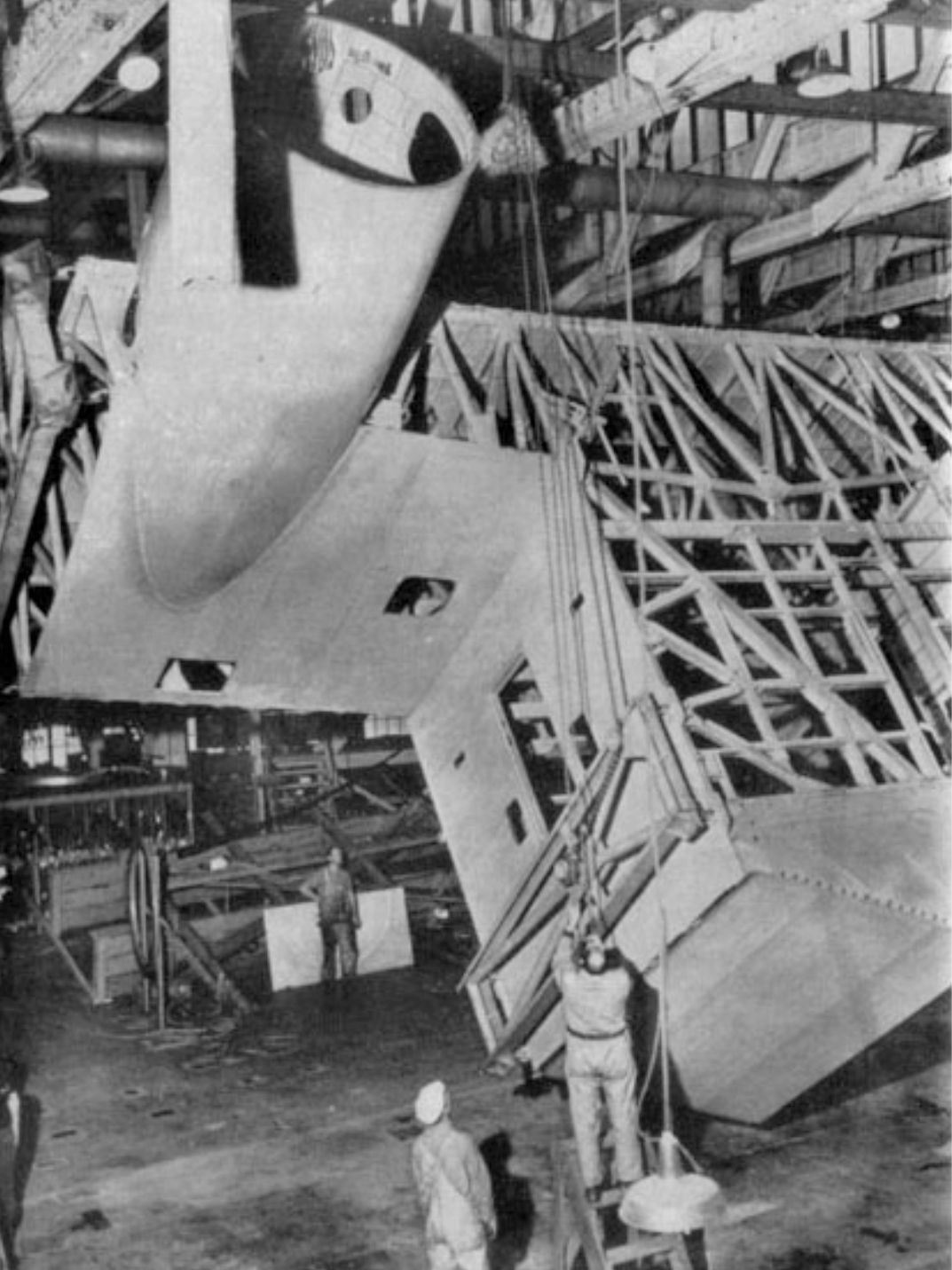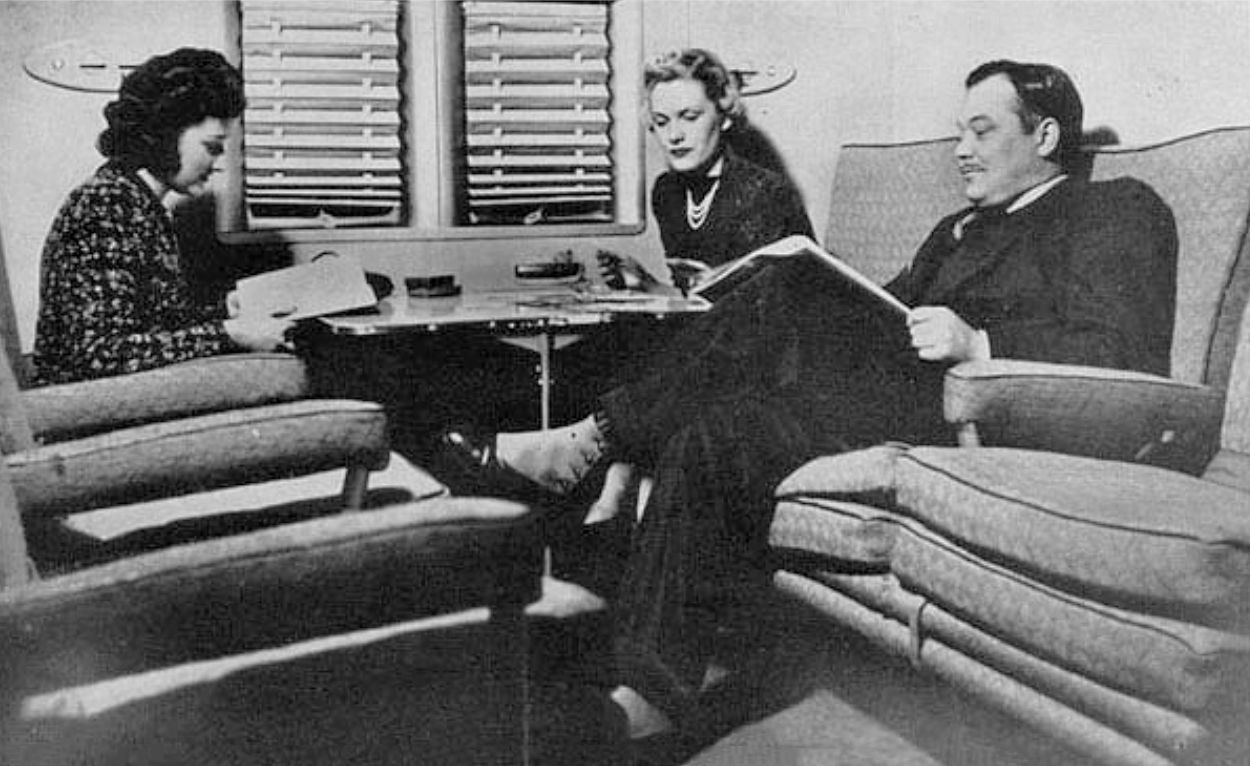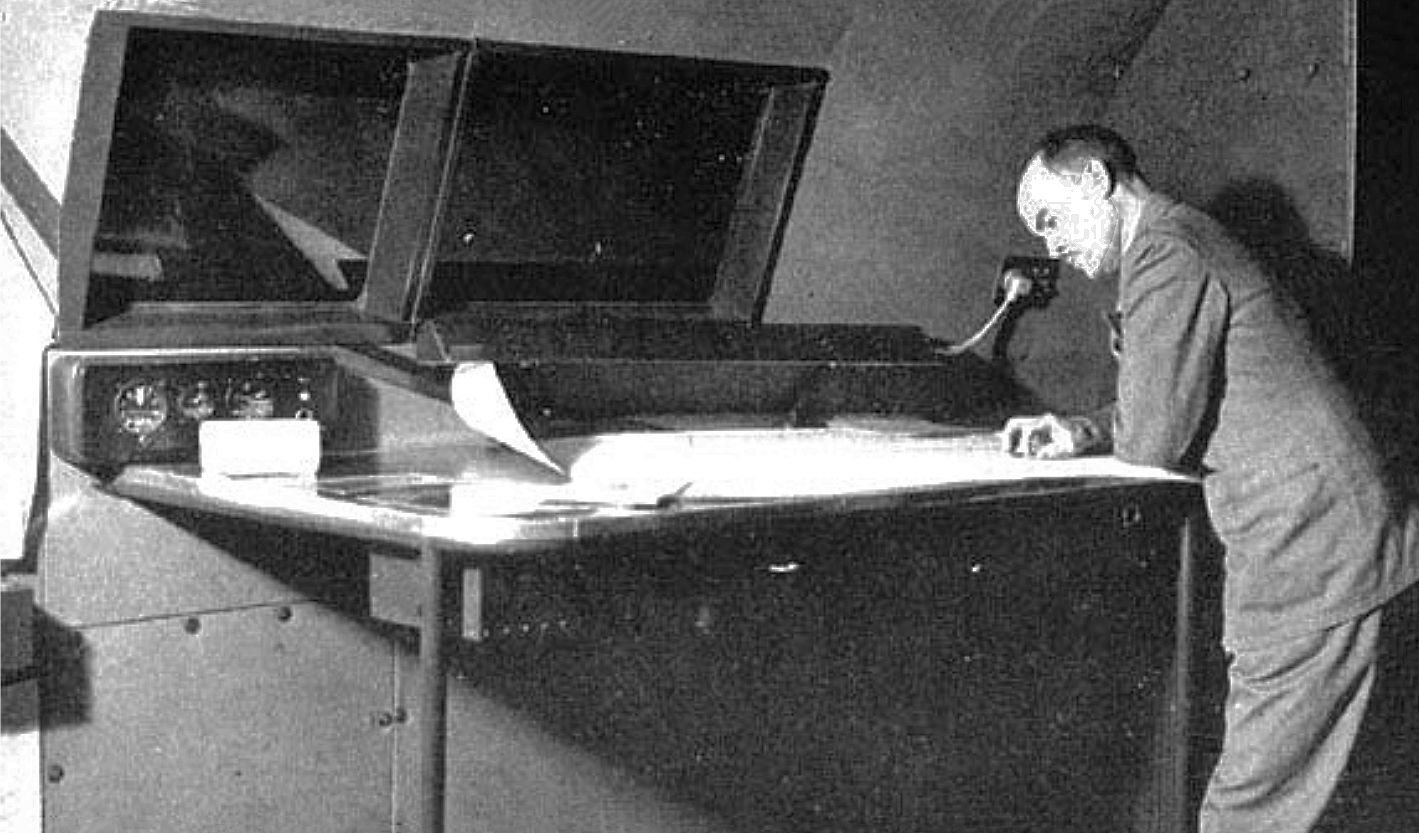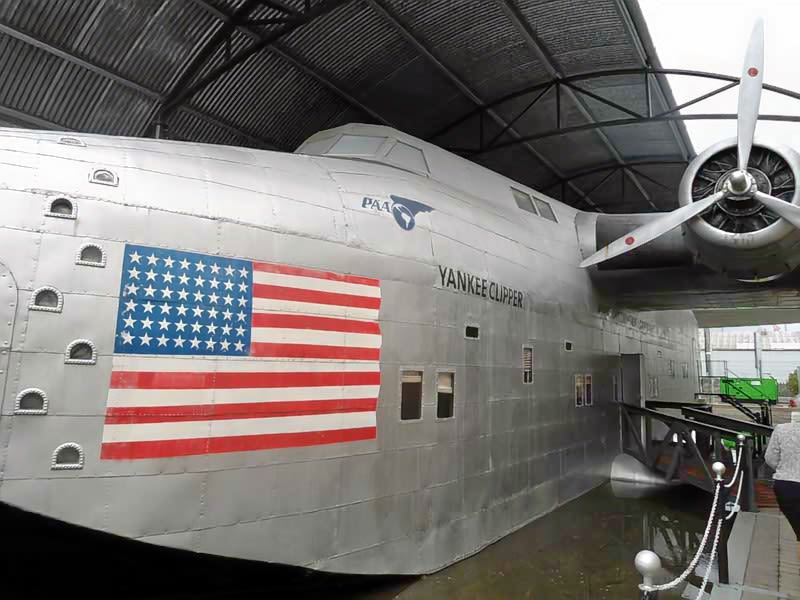SUPER
CLIPPER
Introducing
Pan Am's Greatest
Flying Boat

A MIGHTY DESIGN: THE BOEING B-314
The 314's Military Beginnings
The height of pre-World War Two commercial air transport – Boeing’s B-314 “Super Clipper” – was in no small part the result of a military vision with air power that could spread its wings over far-flung American strongholds such as Hawaii, Alaska, and the Panama Canal.
The world was roiling with danger from potential threats and America’s military aviation planners understood that future defense meant projecting air power far from shore over great distances north and south. The concept was realized, up to a point, in the huge Boeing XB-15 bomber that was carried aloft on a mighty wing but powered by engines that weren’t up to the job.
And the XB-15 never made it out of the prototype stage (although that one airplane went on to serve as a transport, known as the XC-105 or “Grandpappy” to its crew). The mid-1930’s were a time when the forces of isolationism and economic stress largely governed policy-making for America. Support for developing military technology on Uncle Sam’s dime was limited. Photo:
Juan Trippe & Civil Aviation
The mid-1930’s were not a time of robust military expenditure in the U.S., but there was growing action in the civil aviation sector.
At Pan American Airways, support for the concept of long-range aircraft was alive and well. President Juan Trippe had long regarded flying transatlantic routes as the keystone link for Pan Am’s global route system.
Juan Trippe's Specifications
Pan Am's Martin M-130 was the largest transport aircraft at the time, but even before the M-130 had begun its airmail service in the Pacific, Juan Trippe was preparing specs for larger planes.
In February 1936, Pan Am asked aircraft manufacturers for competitive bids on a new generation of flying boats to fill the gaps in the airline’s expanding international route network, with a particular eye on routes across the Atlantic.
The challenge the airline laid out to aircraft builders was for an airplane that could fly 4,000 miles against a 30-mile-per-hour headwind, and carry a sufficient payload. Photo: Boeing B-314 center wing section being positioned during construction.
Wellwood Beall's Proposal
It was Boeing’s good luck that aircraft designer Wellwood Beall was on their payroll. He had long pondered such a development. As an engineer-salesman selling Boeing fighter planes in China, he'd spent his spare time envisioning a transoceanic flying boat. In the summer of 1935, Beall returned from Shanghai to Seattle , bringing his increasingly detailed flying boat concept with him.
A few months later, Beall was asked to help prepare Boeing’s answer to Pan Am’s request for a proposal. He had methodically thought through may aspects of the design challenge, and one of the most important components of his concept was to incorporate the big wing that had been designed for the XB-15. If it wouldn’t carry an oversized bomber aloft, it could just as well work on a commercial transport. Photo: Wellwood Beall working aboard B-314.
Designing the 314
Along with Boeing, aircraft manufacturers Douglas, Martin, and Sikorsky all responded to Pan Am’s request for bids, but in the end it was Beall’s concept and Boeing’s promised delivery dates that sealed the deal. OnJuly 21, 1936, Pan Am signed a contract with Boeing for six Super Clippers – the B-314s.
With newly developed Wright Twin-Cyclone R-2600 engines, which could develop 1,500 h.p., the big wing could be put to use on a big flying boat.
The Boeing Company signed a contract with Pan Am on July 21, 1936 to deliver six flying boats, known as model B-314’s, over the course of 10 months beginning in December, 1937.
Building the 314
Boeing missed the promised delivery date because the construction of the complex flying machines demanded myriad time-consuming accommodations as things progressed. As the first plane got ready for testing in June 1938, it was quickly apparent that it wasn’t quite ready for actual passenger transport.
The tail assembly, or empennage, would need much more lateral authority. What started as a single tail quickly went through a two-stage evolution. Boeing B-314 center wing section being positioned during construction. Photo: Honolulu Clipper.
Twin tails didn’t suffice, so the original central fin was put back, and three vertical fins did the trick. The plane had a tendency to “porpoise” – bounce back into the air – when landing, which eventually led to a redesign of the hull configuration.
B-314 Deliveries to Pan Am
- On January 27th, 1939 NC-18602, to be christened the California Clipper at Treasure Island in San Francisco Bay three months later, was the first B-314 delivered to Pan Am. She went in to service on the Pacific run. Photo: Pan Am Boeing-314 Honolulu Clipper between tests, Lake Washington, 1938.
- The second B-314, to be christened Yankee Clipper, was ferried east in preparation for Atlantic service. Read Juan Trippe's speech that day on the Yankee Clipper page.
- The remaining four planes: Atlantic Clipper, American Clipper, Honolulu Clipper, and Dixie Clipper were turned over to Pan Am over the course of the next months.
- It was the honor of the Dixie Clipper, NC-18605, under the command of Capt. R.O.D. Sullivan, to inaugurate regularly scheduled passenger service to Lisbon, Marseilles and Southampton from Port Washington, New York on June 28, 1939, carrying 22 passengers.
- Six more of the big flying boats – dubbed B-314A’s – would be ordered by Pan Am, with upgraded performance thanks to enhanced Wright engines.
Pan Am's Boeing-314 Goes to War
But as the world slid towards global war, it became clear that transoceanic aviation networks were absolutely critical – so much so that Pan Am was induced to sell three of the new planes to the British, already fighting a life-or-death struggle in Europe.
The big wings on the Boeings, first designed to carry warplanes would go on to serve critical roles on transport aircraft in the defense of freedom – keeping vital connections open between continents, carrying high-value personnel and cargo at high speed to far-flung destinations.
EDDIE ALLEN Interview
Video: Hear a June 1, 1938 radio interview from the Library of Congress with Eddie Allen as he talks about his career in flight testing, and piloting the Mighty B-314. Photo: Famed test pilot Eddie Allen studies B-314 navigational chart.


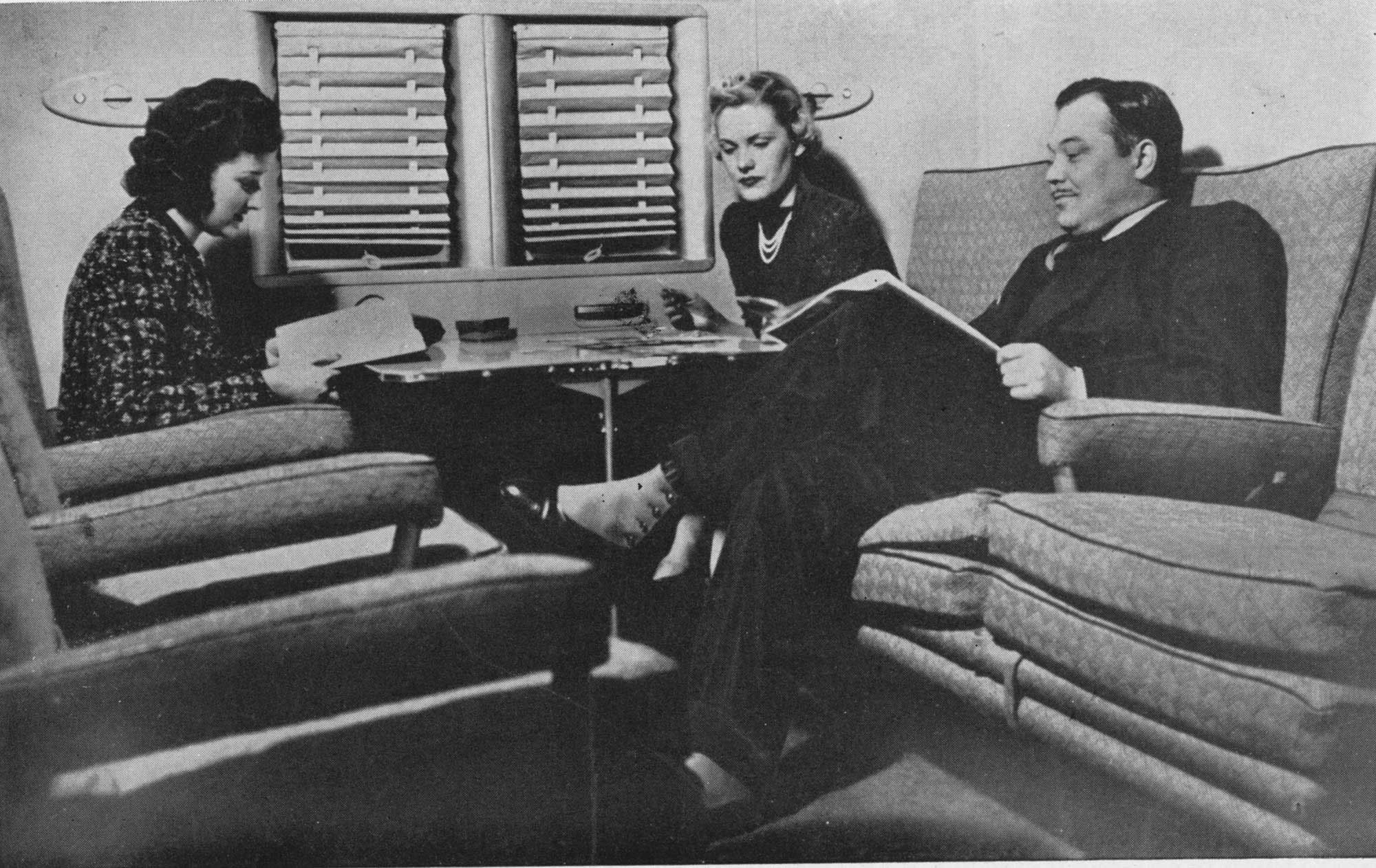
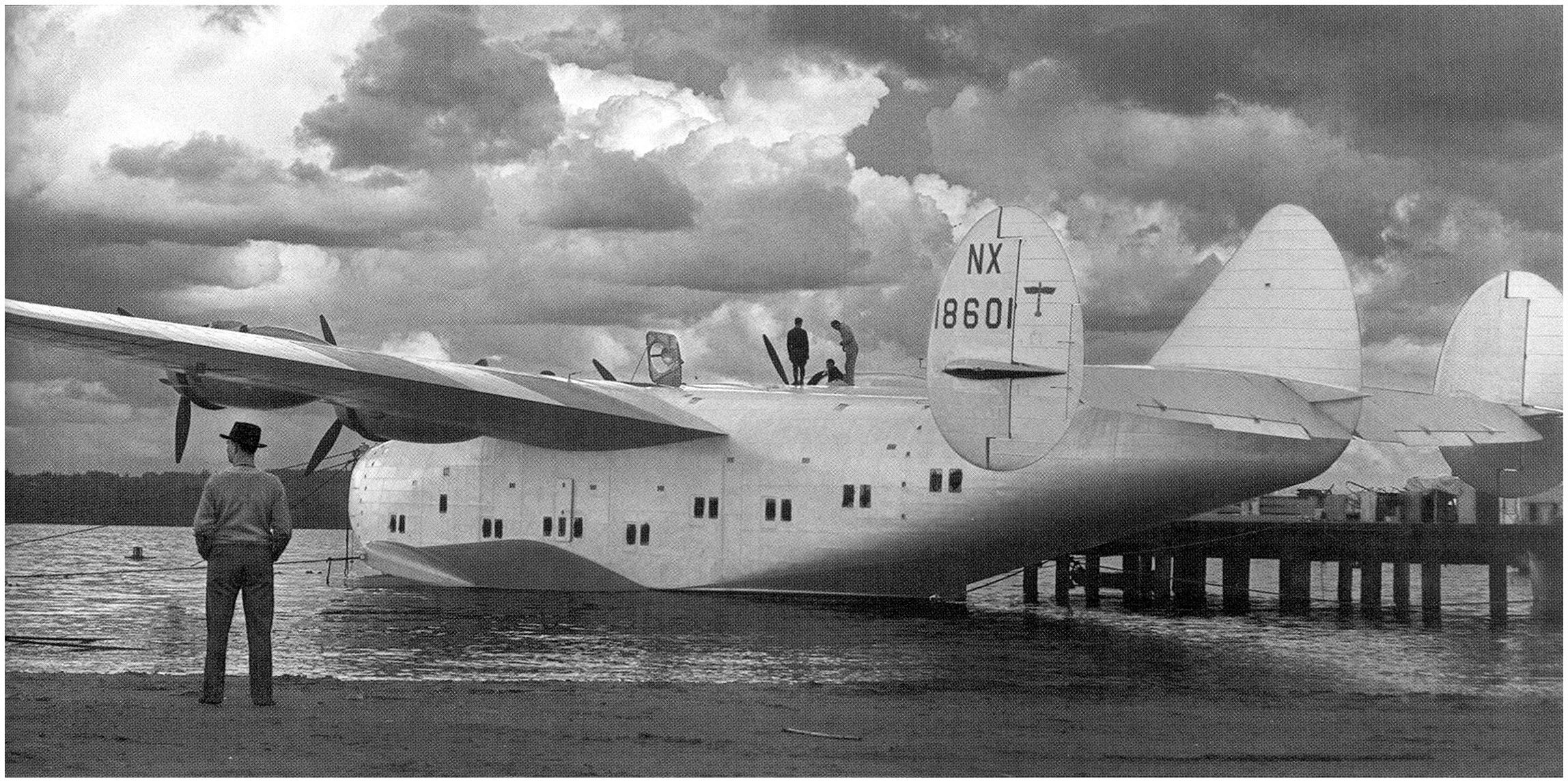
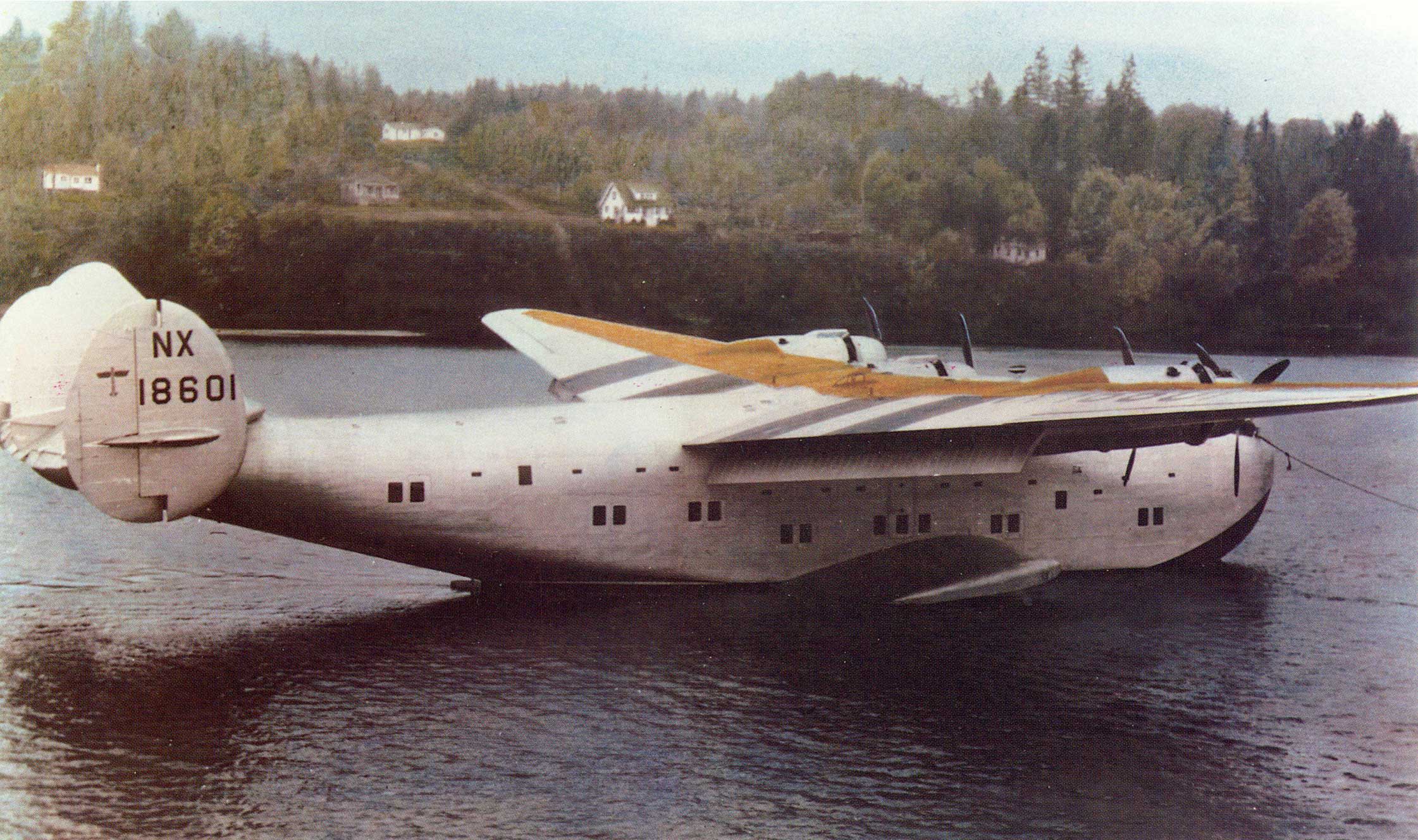
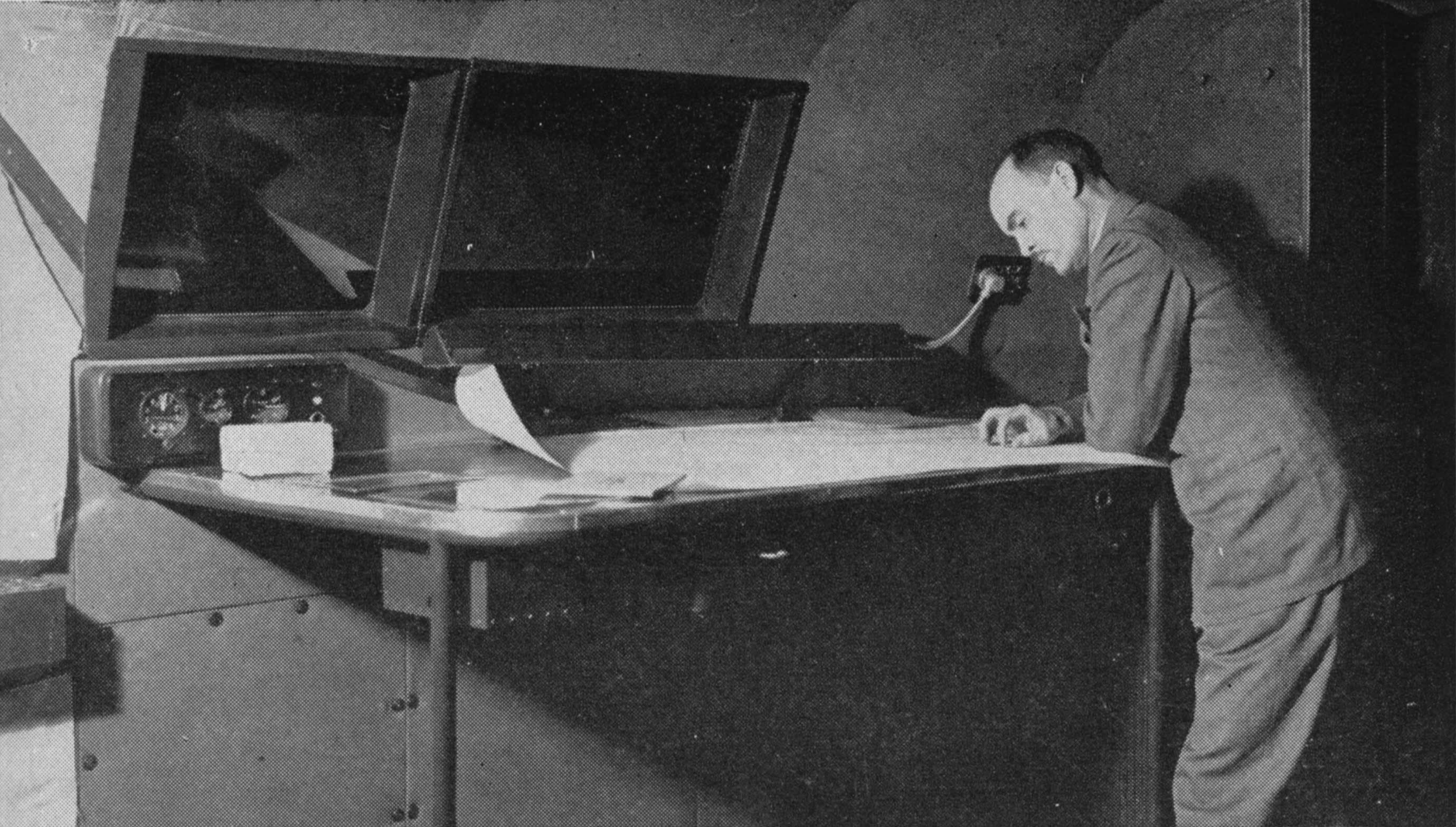
LISTEN
EDDIE ALLEN RADIO INTERVIEW – 1938 (pahf Collection)
Photo of Eddie Allen, the Boeing test pilot who shepherded the brand new Boeing-314 through its flight tests in 1938. (For best results, enable the closed captioning option on the Vimeo playbar.)
B-314 REPLICA –FOYNES FLYING BOAT MUSEUM
Today people can visit a life-size replica of the Yankee Clipper at Foynes Museum in Ireland. Peter Leslie son of Division Engineer and later Atlantic Division Manager John C. Leslie, has written his personal impressions on a visit to see their flying boat.
Visiting the Foynes Flying Boat Museum in Ireland, near Shannon Airport: "Of all the marvelous displays at the museum the crown jewel is the full size reproduction of the Boeing B-314 fuselage and tail assembly. From the street you see the iconic three vertical stabilizers, the empennage, to be technical. From inside the museum you walk out as if onto a dock. The wing and an engine loom over you, you step onto the sponson and enter the cabin. The only thing missing is the Pan Am steward to greet you. Otherwise, every detail is a faithful reproduction of the seats, fabric, molding, paint color, etc., everything is perfect. The flight deck looks like it was in use just minutes ago as the flying boat alighted on the Shannon River."
Foynes Flying Boat Museum Pan Am Boeing 314 life-size model (PAHF Collection).
Foynes Flying Boat Museum Pan Am Boeing 314 life-size model (PAHF Collection).
Clip of Boeing 314 Clipper over San Francisco Bay from Pan American Airways production "Transpacific," c. 1940 (PAHF Film collection).
Clip of Boeing 314 Clipper over San Francisco Bay from Pan American Airways production "Transpacific," c. 1940 (PAHF Film collection).
HISTORY LIVES AT THE MARINE AIR TERMINAL – a new Yankee Clipper model
In 2021, Pan Am Historical Foundation Chairman Ed Trippe spearheaded the installation of a large B-314 Yankee Clipper model in the Marine Air Terminal (MAT), at LaGuardia Airport. The model now graces the MAT's Art Deco rotunda, surrounded by James Brooks' WPA mural, "Flight."
Built by Roger Jarman of Atlantic Models, this Yankee Clipper exhibit takes us back to the romance of air travel in the early days of Pan Am and the inspirational voice of Juan T. Trippe.
Installation of the new B-314 at the Marine Air Terminal, LaGuardia (Courtesy of Pan Am Historical Foundation Chairman Ed Trippe).
HISTORY LIVES AT THE MAT
Video includes the voice of Juan T. Trippe at the MAT Opening, March 1940 (WNYC Archive) and photos (Courtesy of Daniel Kusrow).
PAN AM YANKEE CLIPPER 3D
WITH A MOUSE OR TOUCH SCREEN, VIEW FROM ANY ANGLE.
Animated 3D Concept of Boeing 314 Yankee Clipper by Thales, via Sketchfab.

